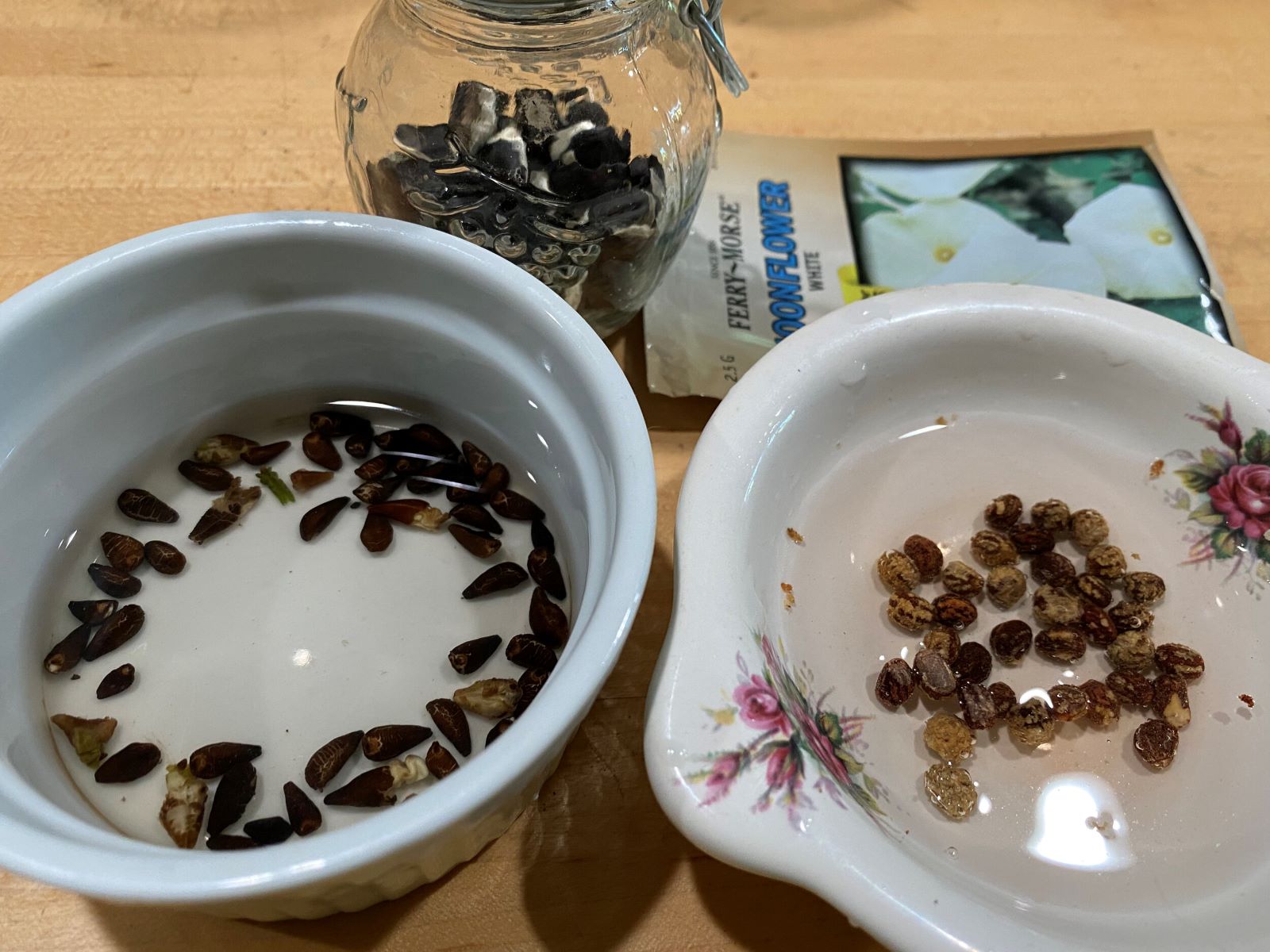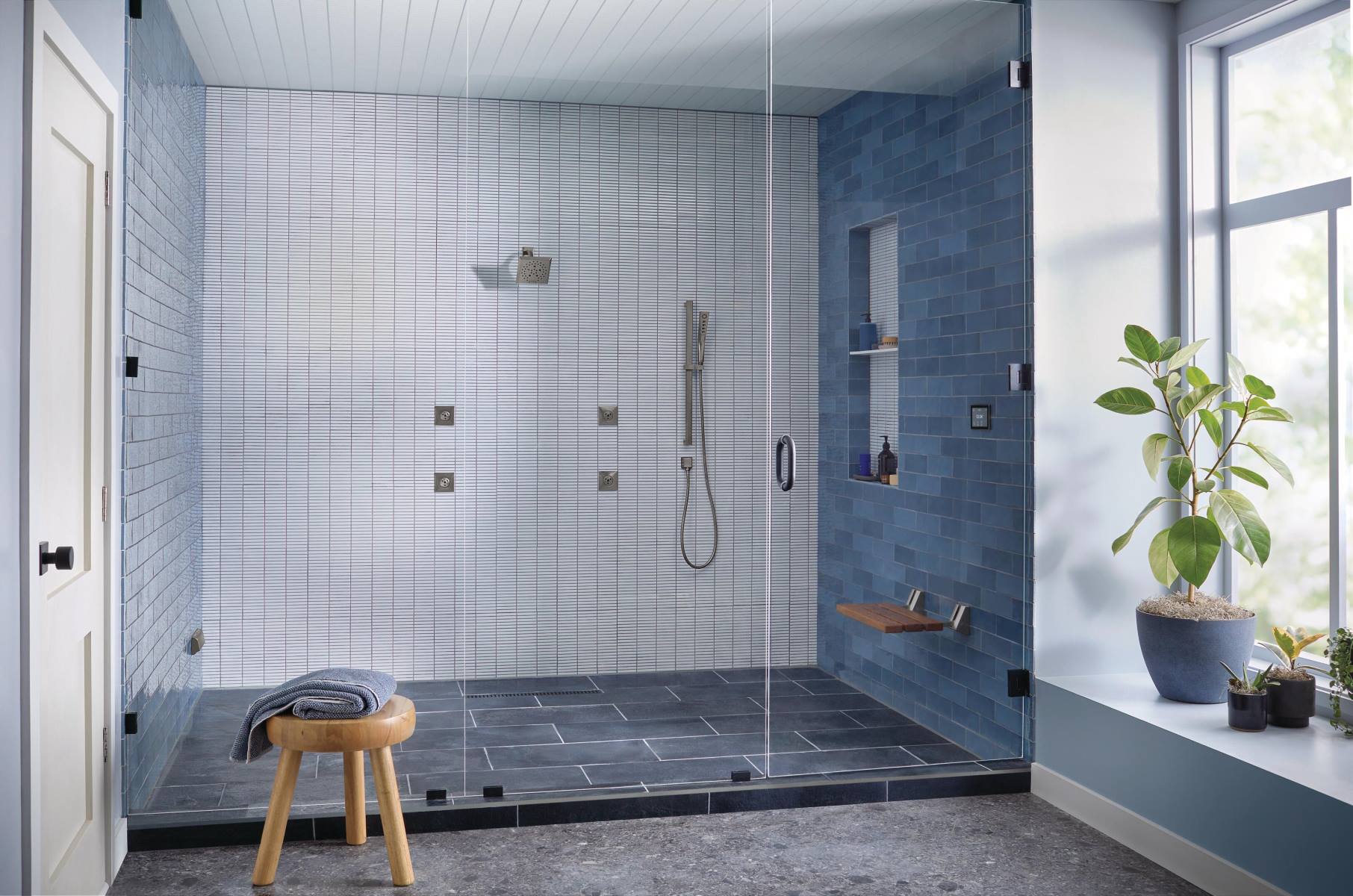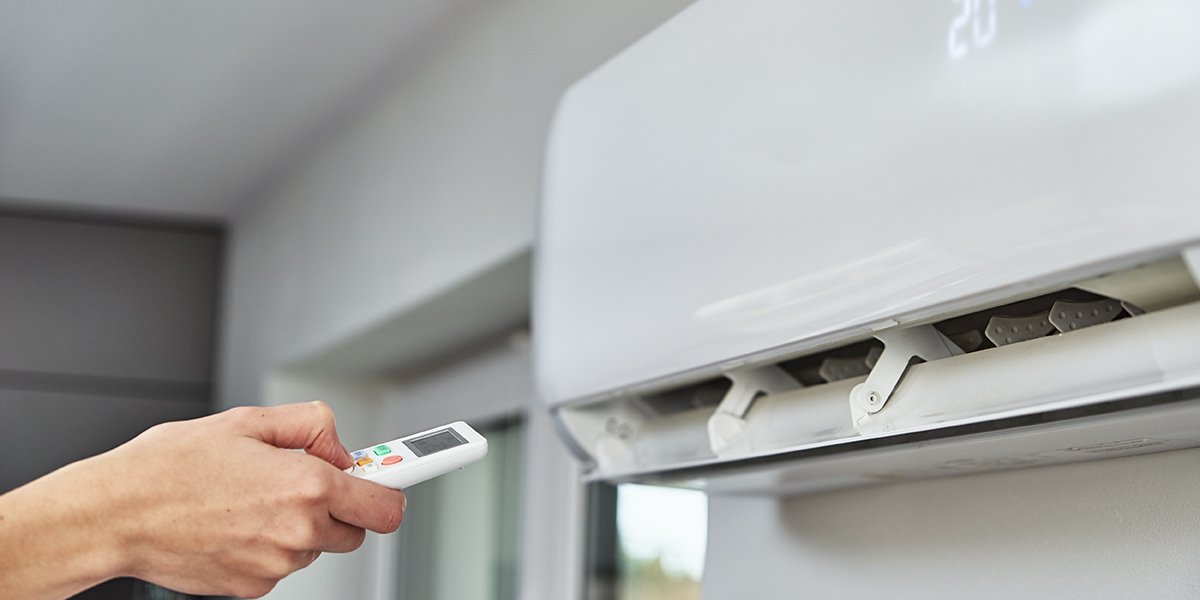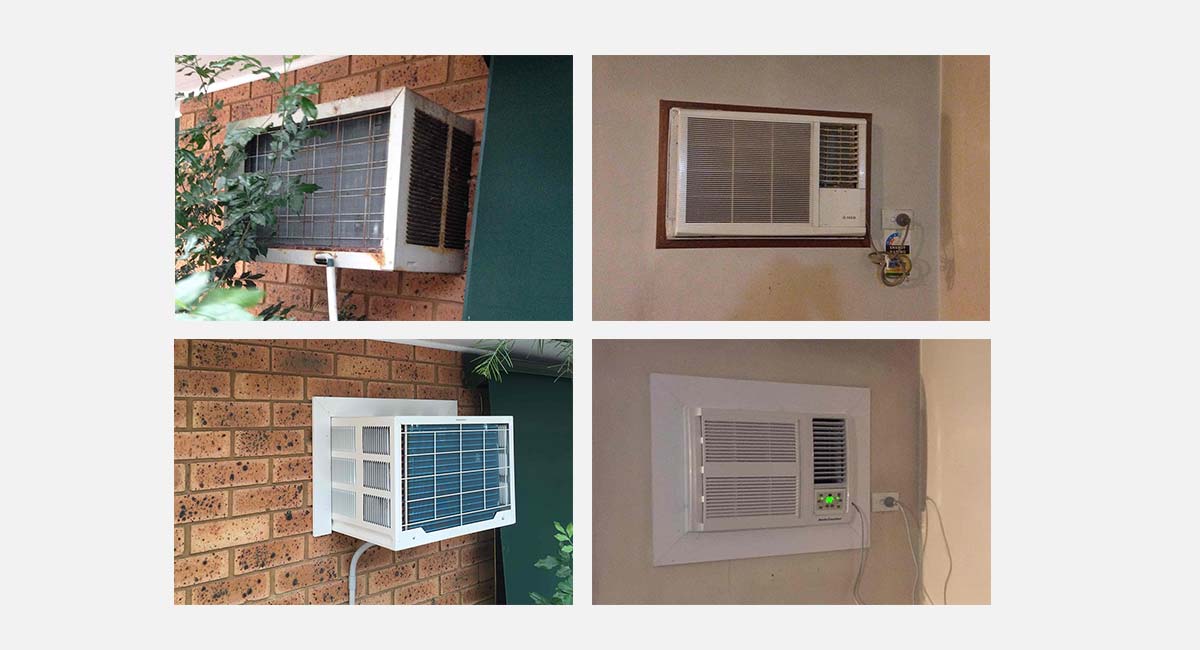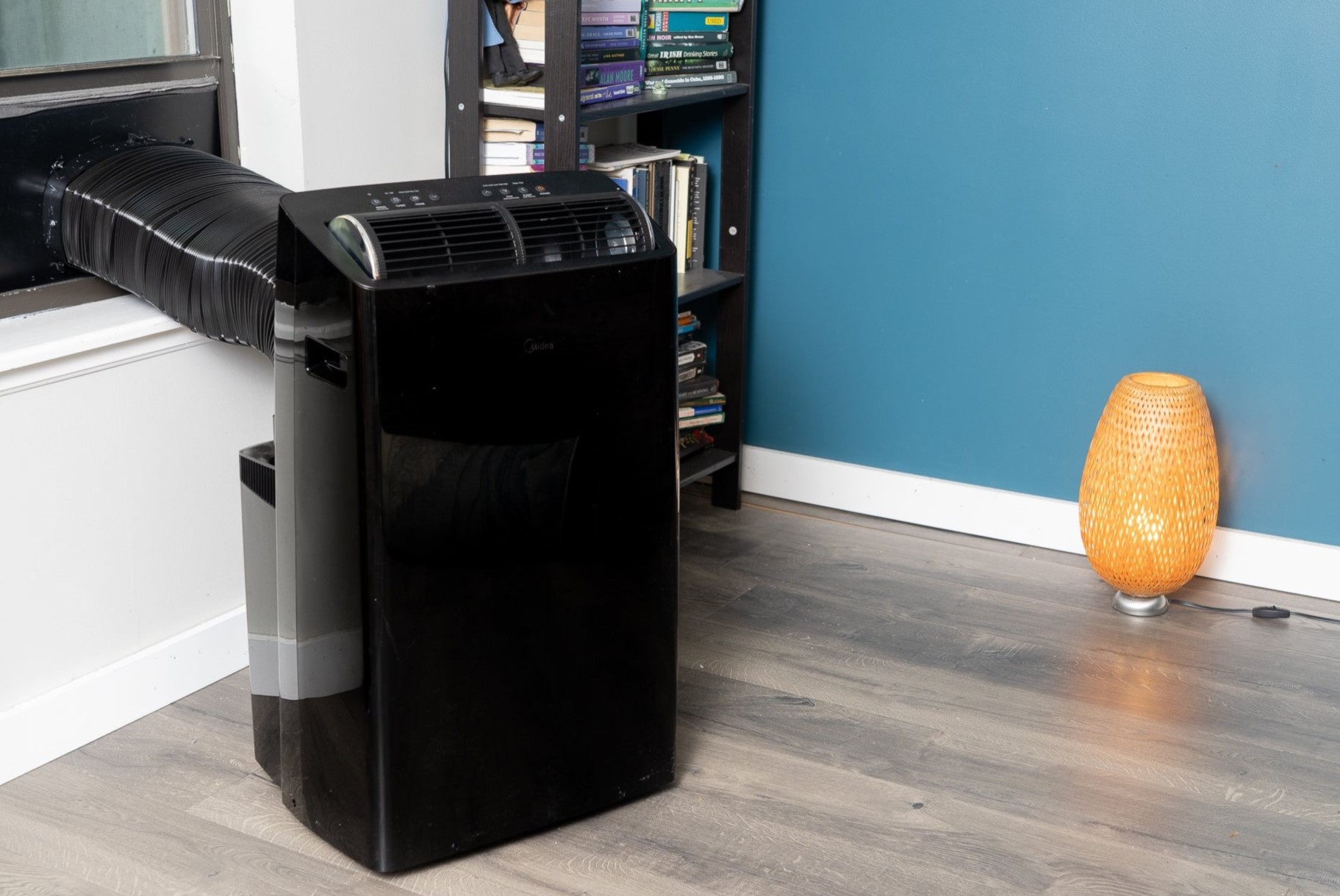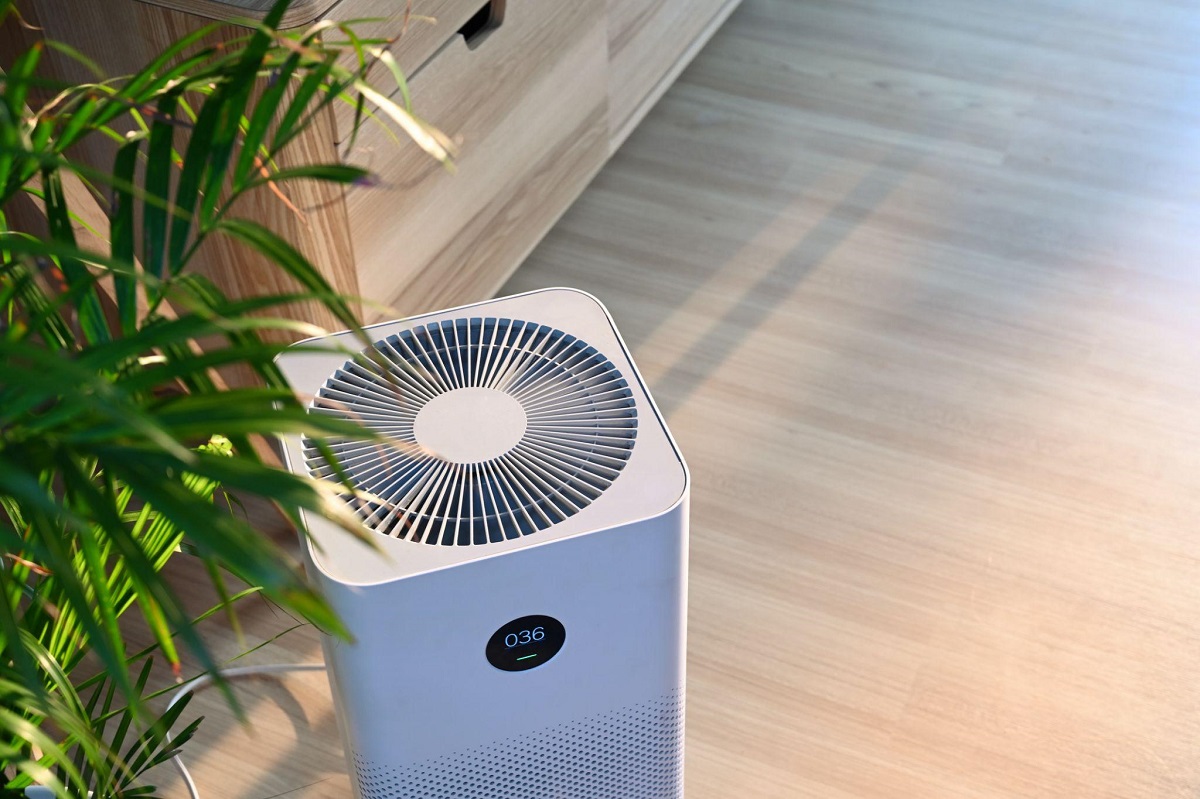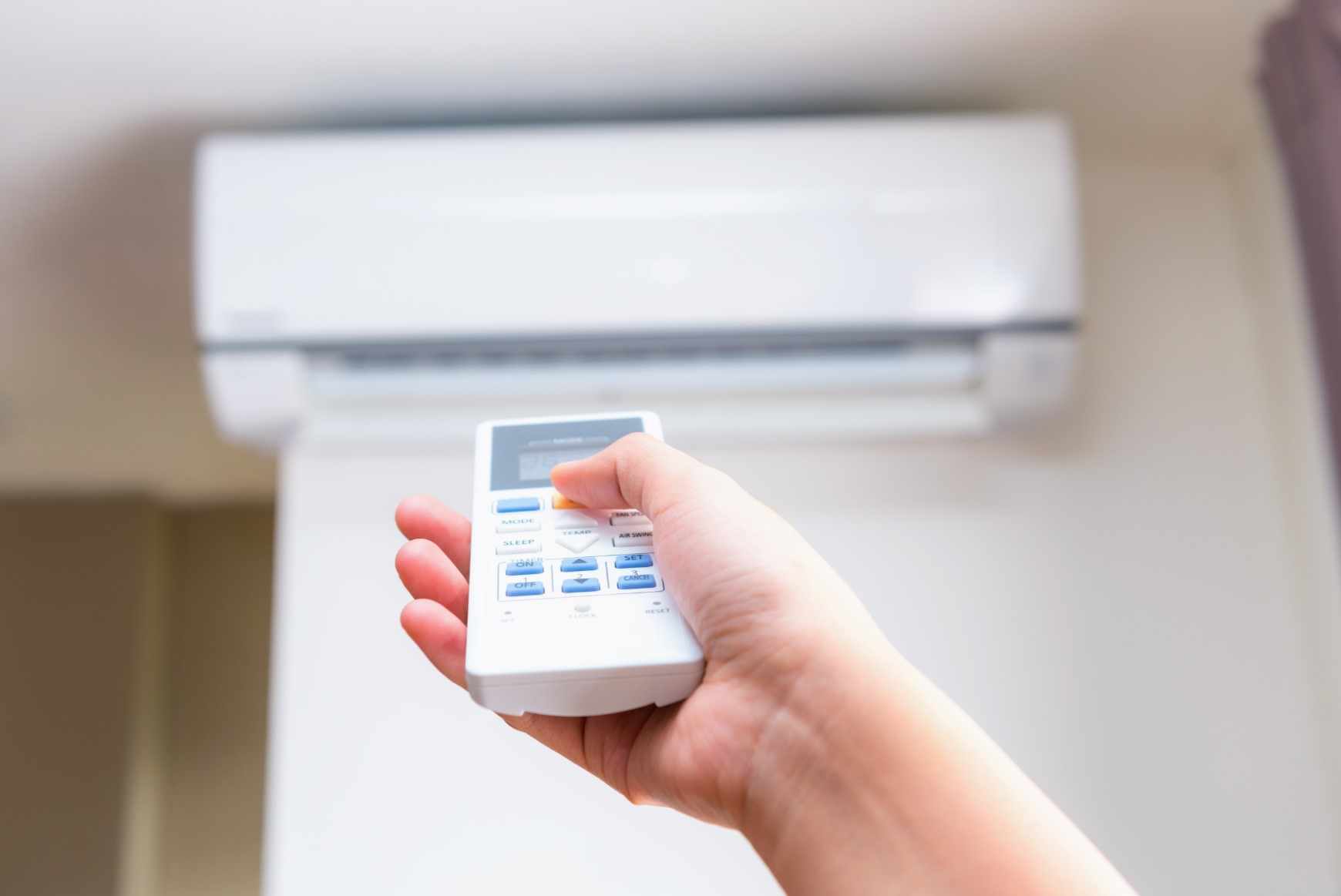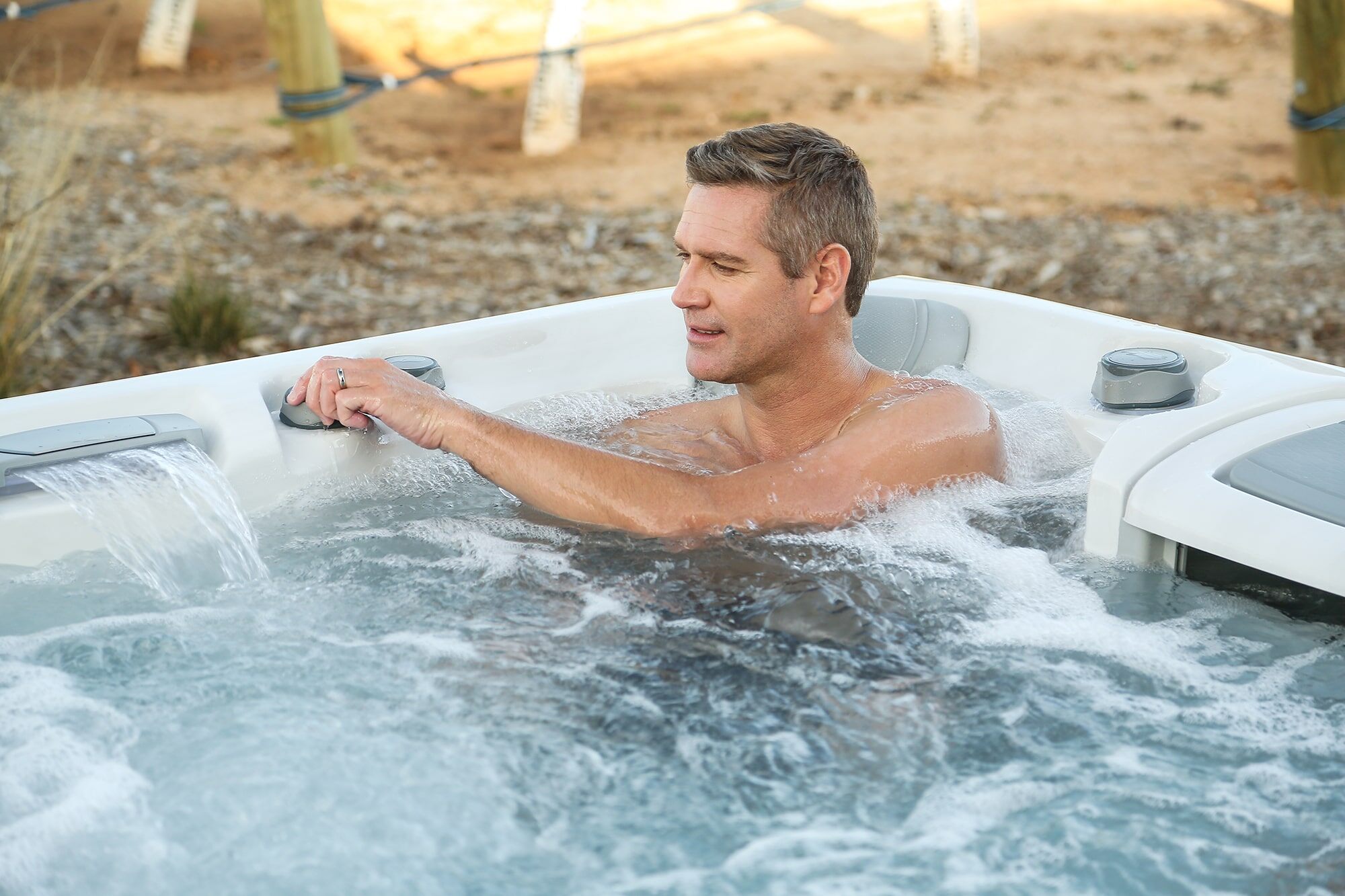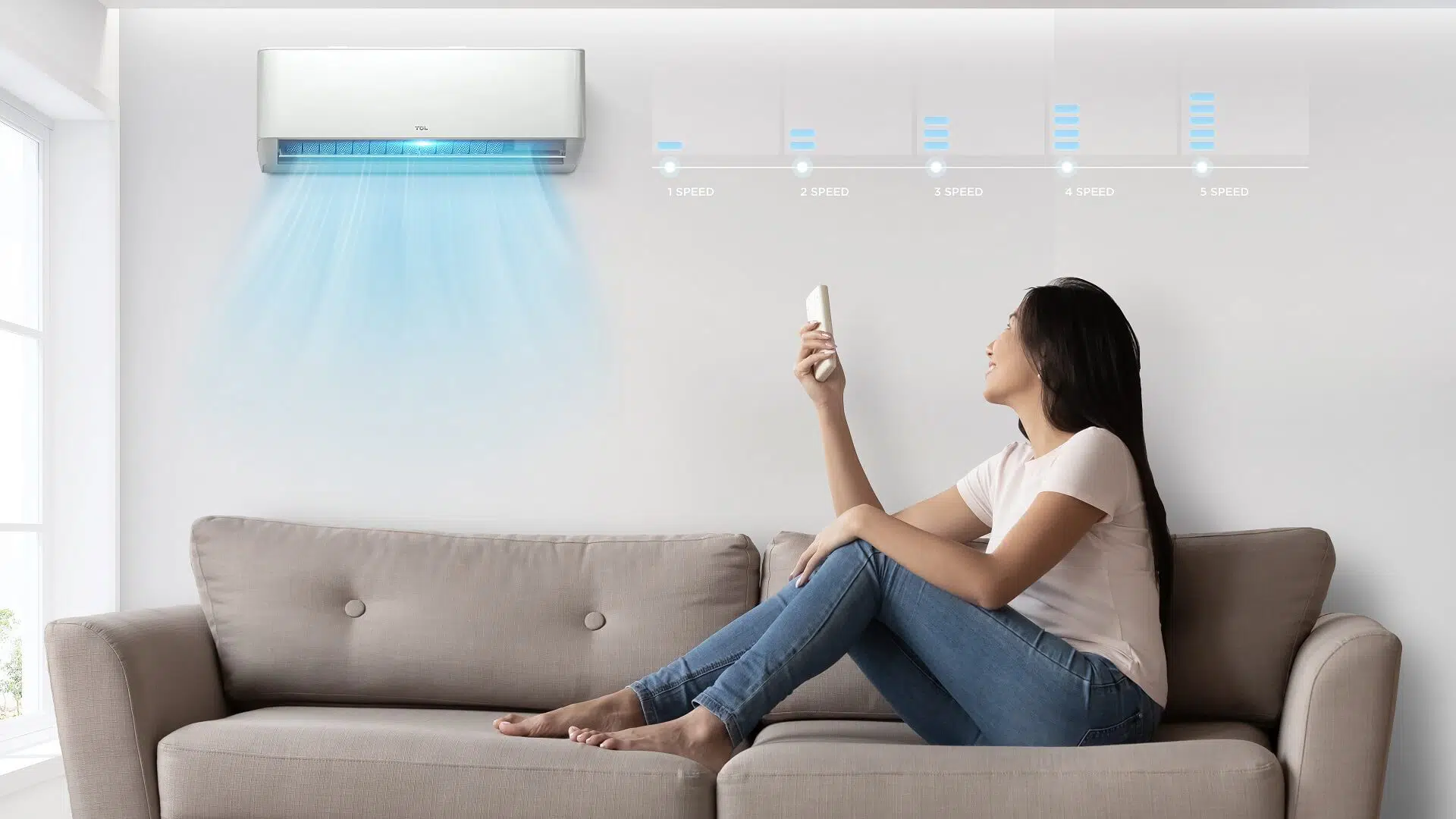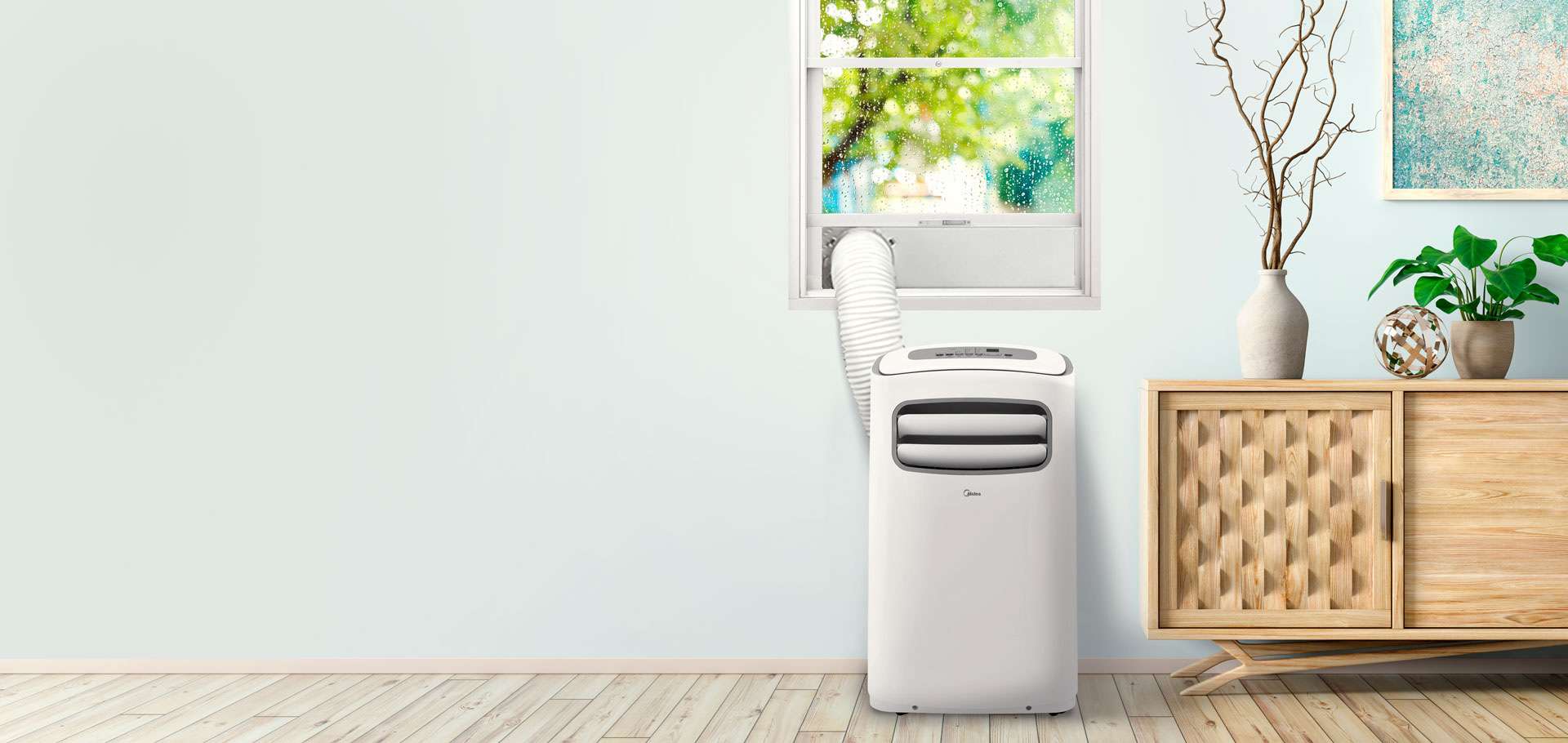Home>Home Maintenance>How Long Should A Portable Air Conditioner Sit Before Turning It On
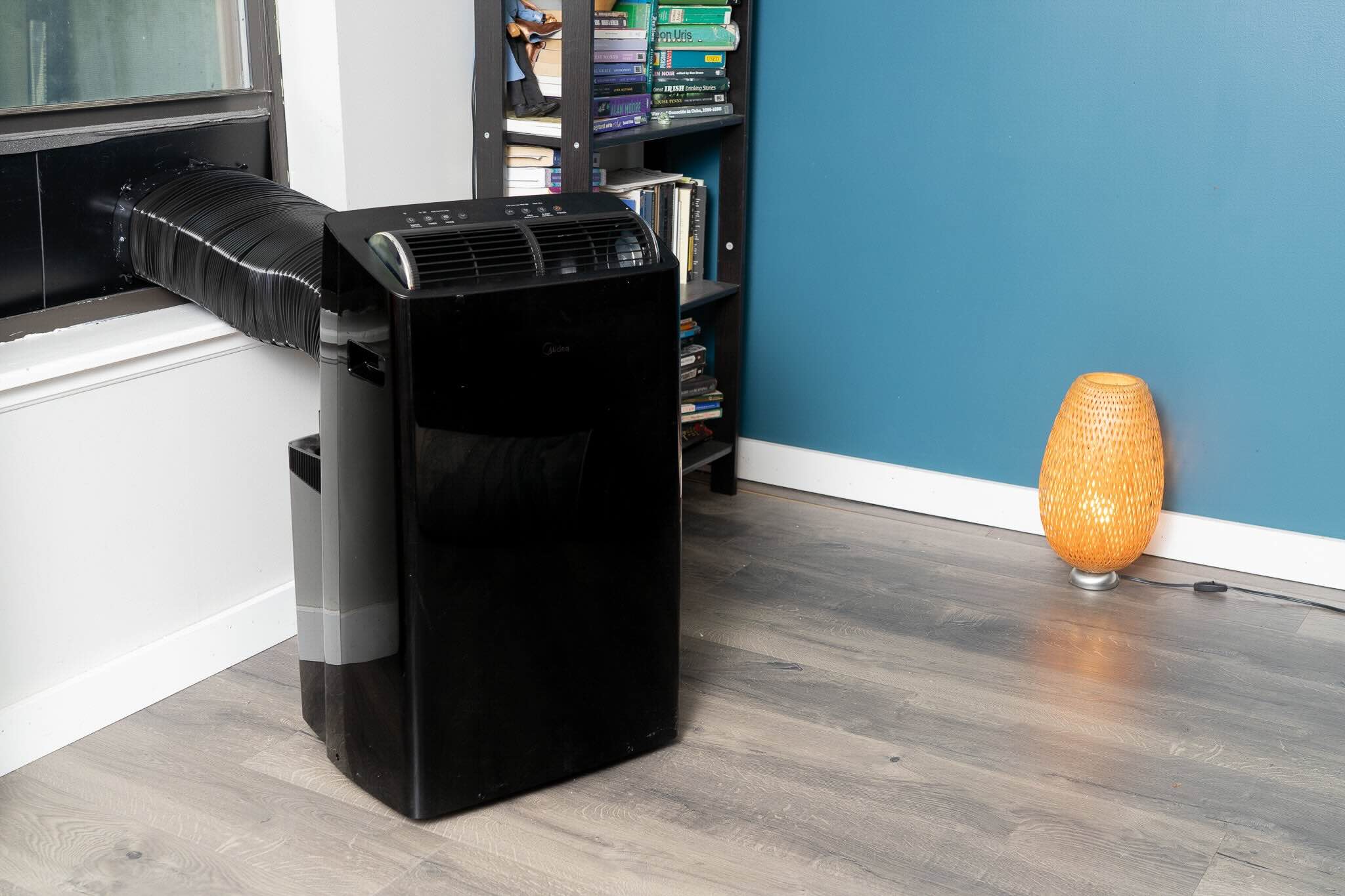

Home Maintenance
How Long Should A Portable Air Conditioner Sit Before Turning It On
Modified: March 6, 2024
Learn the recommended time for a portable air conditioner to sit before turning it on. Get expert advice for home maintenance and cooling solutions at our website.
(Many of the links in this article redirect to a specific reviewed product. Your purchase of these products through affiliate links helps to generate commission for Storables.com, at no extra cost. Learn more)
Introduction
Welcome to the world of portable air conditioners! These versatile appliances provide a convenient way to cool your living space, offering flexibility and ease of use. Whether you’re looking to escape the summer heat or create a comfortable environment year-round, a portable air conditioner can be a practical solution.
However, before you plug in your new portable air conditioner and start enjoying the cooling relief, it’s important to understand the factors that should be considered. One crucial question that often arises is how long a portable air conditioner should sit before turning it on. In this article, we will explore this topic in detail and provide you with some helpful insight.
When you purchase a portable air conditioner, it is typically shipped and stored in a box. During transportation, the unit may experience vibrations and movements that can disturb its internal components. Giving the air conditioner some time to settle after unboxing is essential to ensure optimal performance.
The time required for a portable air conditioner to sit before turning it on can vary based on several factors, including the brand, model, and shipping conditions. In some cases, manufacturers even provide specific instructions regarding the recommended waiting period.
So, what factors should you consider before powering up your portable air conditioner? Let’s delve into the details in the following sections.
Key Takeaways:
- Let your portable air conditioner settle for 2-4 hours before turning it on to ensure optimal performance and longevity. Check the manufacturer’s instructions for specific recommendations.
- Avoid common mistakes like insufficient ventilation and improper sizing to optimize your portable air conditioner’s efficiency. Follow maintenance tips for a cool and comfortable living space.
Read more: What To Do Before Turning On Air Conditioner
Factors to Consider Before Turning on a Portable Air Conditioner
Before turning on your portable air conditioner, it’s important to take certain factors into consideration. These factors can have an impact on the unit’s performance, energy efficiency, and overall lifespan. By addressing these considerations, you can ensure that your air conditioner operates optimally. Here are the key factors to keep in mind:
- Unpacking and Settling: As mentioned earlier, portable air conditioners are typically shipped and stored in boxes. It is essential to allow the unit to settle for at least a few hours, or even up to 24 hours, after unboxing. This allows the internal components to stabilize and prevents any damage that may have occurred during transportation.
- Room Temperature: Portable air conditioners work by extracting heat from the room and expelling it outside. To achieve efficient cooling, it’s important to start with a room temperature that is not excessively high or low. Ideally, the room temperature should be between 70°F and 80°F (21°C and 27°C) before turning on the air conditioner. Starting with a moderate temperature helps the unit reach the desired cooling level faster and prevents unnecessary stress on the compressor.
- Ventilation: Proper ventilation is crucial for the efficient operation of a portable air conditioner. These units typically come with an exhaust hose that needs to be properly installed and vented outside. Ensure that the window or opening where the hose is attached is securely sealed to prevent hot air from entering the room. Improper ventilation can result in reduced cooling efficiency and increased energy consumption.
- Power Source: Before turning on the air conditioner, ensure that you have the appropriate power source available. Portable air conditioners require an electrical outlet that can handle the unit’s power requirements. Check the manufacturer’s specifications to ensure that the electrical circuit can handle the load. Using an improper power source can lead to power fluctuations and potential damage to the air conditioner.
- Cleanliness: It’s essential to maintain a clean environment for your portable air conditioner to maximize its performance. Make sure the air filter is clean and free from dust and debris. Regularly cleaning or replacing the filter ensures proper airflow and prevents clogging, which can hinder the unit’s cooling efficiency.
By considering these factors before turning on your portable air conditioner, you can maximize its performance and longevity, providing you with a cool and comfortable environment for years to come.
Ideal Time Duration for Portable Air Conditioner to Sit Before Turning It On
The ideal time duration for a portable air conditioner to sit before turning it on can vary depending on different factors. While some manufacturers recommend a specific waiting period, there are general guidelines you can follow to ensure your unit is ready for operation.
Typically, it is recommended to let the portable air conditioner sit for at least 2-4 hours before turning it on. This allows the unit to acclimate to the room temperature and settle after being transported or stored. However, for some models, the waiting period may be longer. It’s important to refer to the manufacturer’s instructions or user manual for the specific recommendations.
During this waiting period, it is crucial to ensure that the portable air conditioner is placed on a level surface. This allows for proper drainage and prevents any potential leaks or overflow. Also, make sure that the unit is positioned at a safe distance from any obstacles or furniture to allow for proper airflow.
Additionally, while waiting for the ideal duration, it is advisable to inspect the unit for any visible damage or loose components. Check the power cord and ensure that it is in good condition with no fraying or exposed wires. Confirm that the exhaust hose and window kit are properly connected and securely in place.
Furthermore, use this time to prepare the room for optimal cooling. Close doors and windows to minimize heat infiltration from outside. Consider using curtains or blinds to block sunlight and insulate the room. These measures help reduce the workload on the portable air conditioner, allowing it to cool the space efficiently.
By giving your portable air conditioner an adequate amount of time to settle, you can ensure the smooth functioning of the unit and prolong its lifespan. Patience during this waiting period will pay off in the long run, as it helps prevent any potential performance issues.
Remember, each portable air conditioner model may have its unique requirements, so it’s essential to refer to the manufacturer’s instructions for specific guidelines. Following these recommendations will ensure that your portable air conditioner operates effectively and provides optimal cooling comfort.
It’s recommended to let a portable air conditioner sit upright for at least 24 hours before turning it on. This allows the refrigerant to settle and prevents damage to the compressor.
Common Mistakes to Avoid
When it comes to using a portable air conditioner, there are a few common mistakes that people often make. These mistakes can negatively impact the performance and efficiency of the unit. By being aware of these pitfalls, you can avoid them and ensure that your portable air conditioner operates at its best. Here are some common mistakes to avoid:
- Insufficient Ventilation: One of the most common mistakes is not providing proper ventilation for the portable air conditioner. Failing to vent the exhaust properly can lead to reduced cooling efficiency and increased energy consumption. Make sure to install the provided exhaust hose correctly and direct it outside through a window or an opening. Ensure that the window or opening is properly sealed to prevent the hot air from re-entering the room.
- Incorrect Sizing: Choosing the wrong-sized portable air conditioner is another common mistake. If you buy a unit that is too small for the room, it will struggle to cool effectively. On the other hand, an oversized unit can cycle on and off frequently, leading to energy wastage and temperature fluctuations. Be sure to accurately measure the room size and choose a portable air conditioner with the appropriate cooling capacity.
- Improper Temperature Setting: Setting the temperature too low can strain the compressor and result in higher energy consumption. It’s important to set the temperature to a comfortable level and allow the unit to gradually cool the room. A temperature between 70°F and 78°F (21°C and 26°C) is generally recommended for optimum comfort and energy efficiency.
- Neglecting Filter Maintenance: Neglecting to clean or replace the air filter regularly is a common mistake that can affect the performance of your portable air conditioner. A clogged filter restricts airflow and reduces cooling efficiency. Check the user manual for instructions on how often the filter should be cleaned or replaced, and make it a routine maintenance task.
- Leaving Doors and Windows Open: For effective cooling, it’s important to keep doors and windows closed while using a portable air conditioner. Leaving them open allows hot air to enter the room, forcing the unit to work harder to cool the space. Ensure that windows and doors are properly sealed to prevent heat infiltration.
By avoiding these common mistakes, you can optimize the performance and energy efficiency of your portable air conditioner. Taking the time to properly vent the unit, choosing the right size, setting the temperature correctly, maintaining the filter, and keeping doors and windows closed will ensure a comfortable and cost-effective cooling experience.
Tips for Optimizing Portable Air Conditioner Performance
To make the most out of your portable air conditioner and ensure optimal performance, consider following these tips:
- Proper Placement: Position your portable air conditioner in a central location within the room to ensure even cooling. Avoid placing it near heat-generating appliances or in direct sunlight, as this can cause the unit to work harder and reduce its efficiency.
- Sealing Air Leaks: Inspect the room for any air leaks, such as gaps in windows, doors, or holes in walls. Seal these areas to prevent hot air from entering and cool air from escaping. This will help improve the efficiency of the portable air conditioner.
- Utilize Programmable Timers: Take advantage of the programmable timer feature, if available, to set specific operating times for your portable air conditioner. This allows you to cool the room before you arrive home and save energy by avoiding unnecessary operation.
- Use Energy-Saving Mode: Many portable air conditioners come with an energy-saving mode that helps conserve energy without sacrificing comfort. Enable this mode to optimize energy consumption and save on your utility bills.
- Clean the Condenser Coils: Over time, the condenser coils on your portable air conditioner can accumulate dust and debris, decreasing the unit’s cooling efficiency. Regularly clean the coils using a soft brush or vacuum cleaner to maintain optimal performance.
- Use Fans to Circulate Air: Place fans strategically to help circulate cool air throughout the room. By combining the airflow from the portable air conditioner and fans, you can achieve more even and efficient cooling.
- Limit Heat-Generating Activities: Minimize activities that generate additional heat, such as cooking with stovetops or using heat-generating electronics. This reduces the overall heat load in the room and allows the portable air conditioner to cool more effectively.
- Regular Maintenance: Follow the manufacturer’s guidelines for regular maintenance, including filter cleaning or replacement, condensate drain clearing, and overall unit inspection. Regular maintenance ensures optimal performance and extends the lifespan of your portable air conditioner.
By implementing these tips, you can optimize the performance of your portable air conditioner, enhance cooling efficiency, and create a comfortable living environment while reducing energy consumption.
Read more: How Long Should You Sit In The Bathtub?
Conclusion
Portable air conditioners offer a convenient and versatile solution for cooling your living space. However, it’s important to consider certain factors before turning on your air conditioner to ensure optimal performance, energy efficiency, and longevity.
We discussed the ideal time duration for a portable air conditioner to sit before turning it on, emphasizing the importance of allowing the unit to settle and acclimate to the room temperature. Typically, it is recommended to wait for at least 2-4 hours before powering up the unit. However, it’s always best to refer to the manufacturer’s instructions for specific recommendations.
In addition to the waiting period, we highlighted some common mistakes to avoid, such as insufficient ventilation, incorrect sizing, improper temperature settings, neglecting filter maintenance, and leaving doors and windows open. By avoiding these mistakes, you can ensure optimal performance and efficiency from your portable air conditioner.
To further optimize the performance of your portable air conditioner, we provided some useful tips. These included proper placement, sealing air leaks, utilizing programmable timers and energy-saving modes, cleaning condenser coils, using fans for air circulation, limiting heat-generating activities, and regular maintenance.
By following these guidelines, you can create a comfortable and cool environment while maximizing the performance and efficiency of your portable air conditioner. Remember to consult the manufacturer’s instructions and user manual for specific recommendations and guidelines for your particular unit.
With the right knowledge and attention to detail, your portable air conditioner can provide you with years of reliable cooling comfort, making those hot summer days more bearable and enjoyable.
Stay cool!
Frequently Asked Questions about How Long Should A Portable Air Conditioner Sit Before Turning It On
Was this page helpful?
At Storables.com, we guarantee accurate and reliable information. Our content, validated by Expert Board Contributors, is crafted following stringent Editorial Policies. We're committed to providing you with well-researched, expert-backed insights for all your informational needs.


